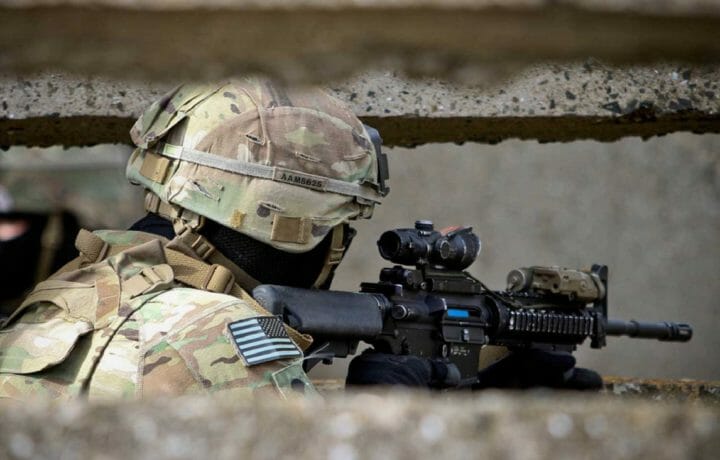Although America’s warfighters won’t be carrying the Next Generation Squad Weapon (NGSW) into combat for at least another couple of years, last month the U.S. Army edged a little closer to determine which of three options that might be.
In September, the Army conducted the first prototype tests of the NGSW, which will replace both the M249 Squad Automatic Weapons (SAW), and the M16/M4 rifle/carbine. The tests were conducted using prototypes of the three previously selected weapons from General Dynamics Ordnance, Sig Sauer, and Textron Systems.
Brig. Gen. David Hodne, Infantry School commandant and Soldier Lethality Cross Functional Team director, and Brig. Gen. Anthony Potts, who heads the Program Executive Office Soldier, provided an update ahead of last the recent Association of the U.S. Army Annual Meeting and Exposition and shared the details to reporters. While details were sparse, all three of the offerings were put through the first prototype tests.
This past spring, the Army had also selected two additional companies, L3 Technologies and Vortex Optics, to compete for the fire control for the weapons systems. The two companies were issued an Other Transaction Authority (OTA) award to deliver production ready prototypes of their NGSW-FC optic for trials and evaluations. An OTA is a Department of Defense (DoD) contract for the development of prototypes, research, and production projects. Both OTA recipients were required to deliver their prototype fire control system to the Army within seven months for testing.
New Projectile
The Army has three different options to choose from, and back in April the firms competing in the NGSW competition each provided 15 rifles, 15 automatic rifles, and 180,000 cartridges. The Army had also previously announced that it would pick the winner and announce the production award by the end of the year, but that has been pushed back due to the novel coronavirus pandemic, which has impacted testing.
The companies will now have until February for the next round of prototype tests.
As ClearanceJobs has previously reported, each of the prototypes developed is quite unique and the three share little in the way of similarities other than each chambered in the government-developed 6.8mm cartridge, which was developed to be more lethal than the currently used 5.56mm NATO ammunition.
The projectile was developed from decades of testing and evaluation that showed that whilst 5.56mm is quite lethal at mid-ranges on the battlefield, it was inadequate compared to the 7.62mm. The new 6.8mm round was determined to outperform both while also saving weight for the soldier.
Slow Rollout
Over the next five years, the Army plans to add more than 120,000 new light machine guns and rifles to the arsenal to replace the legacy M4 and M249. This would include 4,000 next fiscal year; double that number for 2023 and 2024 until by 2025 a total of 121,773 new weapons have been acquired. The price tag for the first 4,000 units was estimated to be nearly $36 million according to the budget documents.
While the Army has announced that weapon will be fielded to all close combat forces, including special operations forces, infantry, combat engineers, and scouts, it could take a while for it to reach wide distribution. Only active-duty personnel are likely to be issued these weapons, and under the current procurement numbers only around one-quarter of the 485,000 active-duty soldiers will likely get a chance to carry the weapon in the coming years.
Army National Guard and Army Reserve soldiers will not likely receive the new systems until 2023 and even then fewer could be headed to them. The National Guard is scheduled to procure 25,541 through fiscal year 2025, while the Reserve is slated for 687 units in the same period.




